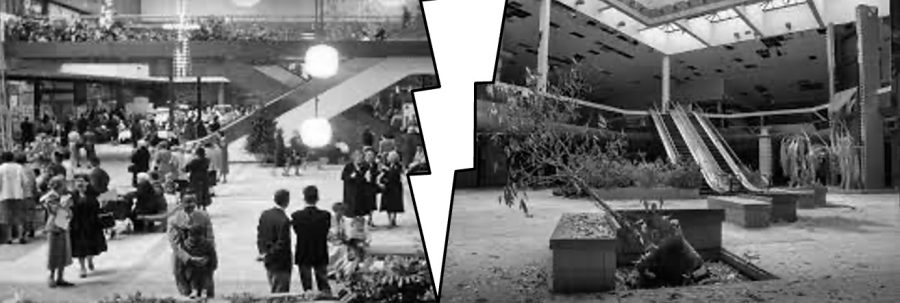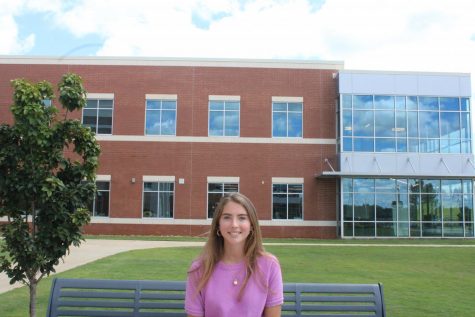The Death of American Malls
Shopping centers that once were the backbone of suburban America are now going extinct
Photo illustration by V. Franke
A stark contrast is seen between the busy malls of the 80’s and the bare malls of today.
April 25, 2022
With the rise of suburbs in the mid twentieth century, malls became a dominant part of American culture for decades to come. The American mall became a symbol of consumerism among the middle class. According to theatlantic.com, malls were first introduced to America by Australian-born architect, Victor Gruen. In 1954, Gruen designed the first outdoor shopping mall near Detroit. 2 years later, Gruen designed America’s first enclosed shopping mall, located in Edina, Minnesota. Gruen intended to bring a European, pedestrian feel to American suburbs. He hoped that by including recreational activities, food, and public spaces within the shopping center, he could create a sense of community in the new sprawling suburbs.
Years later, over 1,200 malls would be opened around America, contributing greatly to suburban sprawl. According to qz.com, when reflecting upon his career just two years before his death in 1978, Gruen showed great disappointment in the cultural phenomenon that his design had developed into.
“I am often called the father of the shopping mall,” Gruen said. “I would like to take this opportunity to disclaim paternity once and for all. I refuse to pay alimony to those developments. They destroyed our cities.”
Malls remained popular throughout the late 1900s and early 2000s and continued to be built at a fast pace. According to washingtonpost.com, by 2008, over 1100 malls were open and many were already rapidly declining when the Great Recession hit, decreasing the average American’s spending power. Over 8 million Americans lost their jobs, home values plummeted, and stocks lost nearly half of their value. In effect, consumers were spending far less in a mall setting.
In an interview with washingtonpost.com, Mark Cohen, the director of retail studies at Columbia Business School discussed how while shopping malls were already experiencing declines in sales and their death was inevitable, the Great Recession greatly accelerated the death of shopping malls throughout the country.
“During the Great Recession, it became clear that there was no way all of these stores would survive,” Cohen said. “Those closures have accelerated over the past decade, and now we’re left with hundreds of ‘zombie malls’ — properties that are still operating but are clomping around more dead than alive.”
The decline in popularity of shopping malls coincided with the introduction of online shopping to Americans led by Amazon. Not only is the option of shopping online from the comfort of one’s own home far more practical for consumers, but they now have unlimited choices. In the past, suburban consumers were limited to the products offered at their local mall, but with online shopping, all stores are available and easy to access.
Lilly Byers (12) is a big fan of online shopping and no longer frequents malls.
“I never really go to the mall anymore since I feel like all of the good stores left. It’s also so much easier to shop online with free shipping and returns,” Byers said.
With many combined factors including urbanization, the rise in online shopping, the great recession, and more recently the pandemic, it is likely for the American shopping mall to go extinct in the coming years. According to cnbc.com, it is estimated that 25% of America’s 1000 remaining malls will close in the next 3-5 years.





